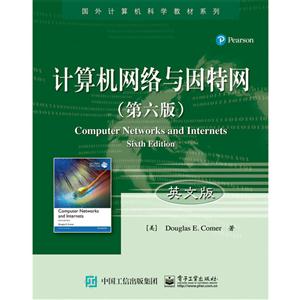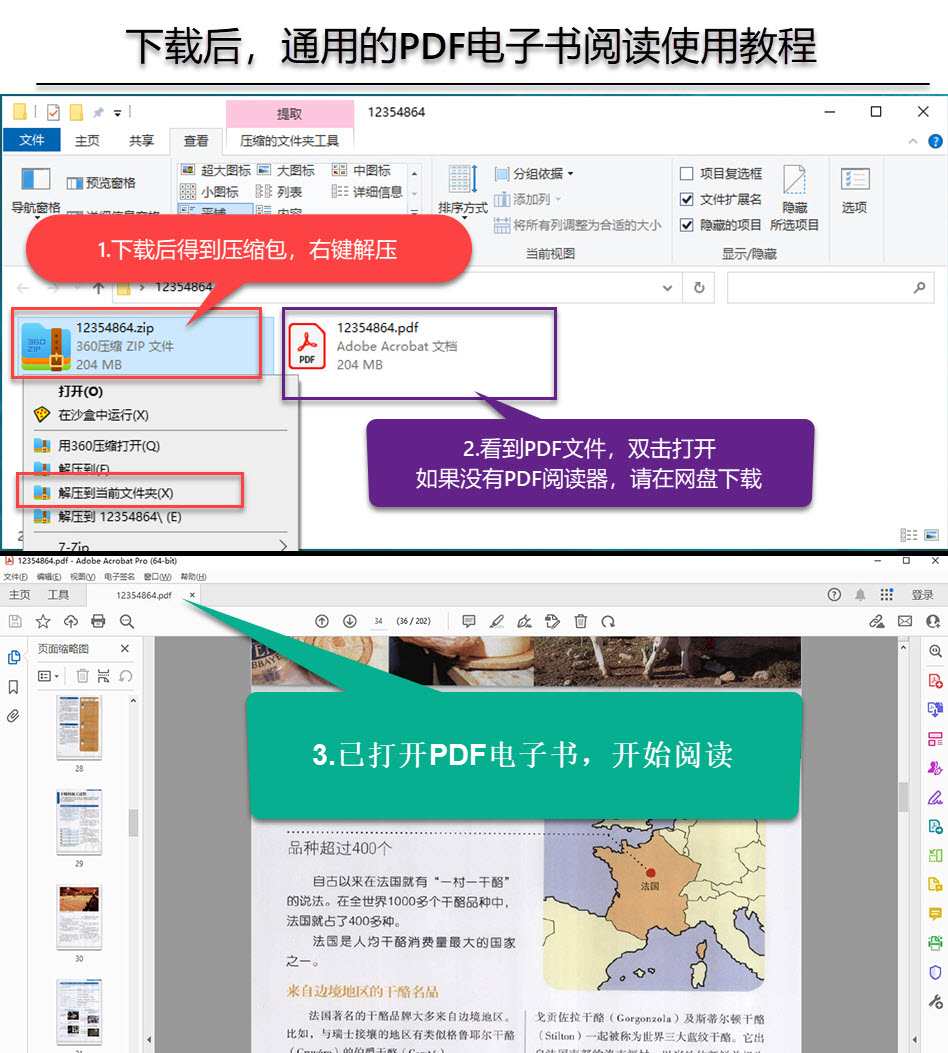计算机网络与因物献金 -(第六版)-英文版
本书特色
[
本书在前几版的基础上进行了全面的修订与更新,系统介绍了计算机网络各方面的知识,全面翔实地讲解网络底层细节,并增加了*的网络应用与技术。全书共分为五大部分,讲解了网络基础知识与因特网应用,数据传输技术,分组交换及网络技术,网际互连协议,以及其他网络概念与技术;并提供了可深入阅读的相关资料。本书内容涵盖广泛,例题丰富,注重实践,并提供了大量的练习题和丰富的网络资源,兼顾到教师和学生的双重需求。
]
内容简介
[
权威作者经典专著,导论性的网络课程教材,在世界各国的多所高校被选为教材使用。本书内容上注重广度而不是深度,组合了“自底向上”和“自顶向下”这两种教学方法各自的优点。
]
作者简介
[
Douglas E. Comer博士是TCP/IP协议和因特网的国际公认专家。自20世纪70年代末、80年代初形成因特网以来,他就一直致力于因特网的研究工作,他也是负责指导因特网开发的因特网结构委员会(IAB)的成员,还是CSNET技术委员会的主席和CSNET执行委员会的成员。 Comer博士是普度大学计算机科学系的教授,他主要教授计算机网络、因特网和操作系统的课程,并进行相关的研究。除了撰写一系列畅销的技术书籍之外,他还是Software-Practice and Experience杂志的北美地区编辑。
]
目录
ContentsPART I Introduction And Internet ApplicationsChapter 1 Introduction And Overview 11.1 Growth Of Computer Networking 11.2 Why Networking Seems Complex 21.3 The Five Key Aspects Of Networking 21.4 Public And Private Parts Of The Internet 61.5 Networks, Interoperability, And Standards 81.6 Protocol Suites And Layering Models 91.7 How Data Passes Through Layers 111.8 Headers And Layers 121.9 ISO And The OSI Seven Layer Reference Model 131.10 Remainder Of The Text 141.11 Summary 14Chapter 2 Internet Trends 172.1 Introduction 172.2 Resource Sharing 172.3 Growth Of The Internet 182.4 From Resource Sharing To Communication 212.5 From Text To Multimedia 212.6 Recent Trends 222.7 From Individual Computers To Cloud Computing 232.8 Summary 24Chapter 3 Internet Applications And Network Programming 273.1 Introduction 273.2 Two Basic Internet Communication Paradigms 283.3 Connection-Oriented Communication 293.4 The Client-Server Model Of Interaction 303.5 Characteristics Of Clients And Servers 313.6 Server Programs And Server-Class Computers 313.7 Requests, Responses, And Direction Of Data Flow 323.8 Multiple Clients And Multiple Servers 323.9 Server Identification And Demultiplexing 333.10 Concurrent Servers 343.11 Circular Dependencies Among Servers 353.12 Peer-To-Peer Interactions 353.13 Network Programming And The Socket API 363.14 Sockets, Descriptors, And Network I/O 363.15 Parameters And The Socket API 373.16 Socket Calls In A Client And Server 383.17 Socket Functions Used By Both Client And Server 383.18 The Connect Function Used Only By A Client 403.19 Socket Functions Used Only By A Server 403.20 Socket Functions Used With The Message Paradigm 433.21 Other Socket Functions 443.22 Sockets, Threads, And Inheritance 453.23 Summary 45Chapter 4 Traditional Internet Applications 494.1 Introduction 494.2 Application-Layer Protocols 494.3 Representation And Transfer 504.4 Web Protocols 514.5 Document Representation With HTML 524.6 Uniform Resource Locators And Hyperlinks 544.7 Web Document Transfer With HTTP 554.8 Caching In Browsers 574.9 Browser Architecture 594.10 File Transfer Protocol (FTP) 594.11 FTP Communication Paradigm 604.12 Electronic Mail 634.13 The Simple Mail Transfer Protocol (SMTP) 644.14 ISPs, Mail Servers, And Mail Access 664.15 Mail Access Protocols (POP, IMAP) 674.16 Email Representation Standards (RFC2822, MIME) 674.17 Domain Name System (DNS) 694.18 Domain Names That Begin With A Service Name 714.19 The DNS Hierarchy And Server Model 724.20 Name Resolution 724.21 Caching In DNS Servers 744.22 Types Of DNS Entries 754.23 Aliases And CNAME Resource Records 764.24 Abbreviations And The DNS 764.25 Internationalized Domain Names 774.26 Extensible Representations (XML) 784.27 Summary 79PART II Data Communication BasicsChapter 5 Overview Of Data Communications 855.1 Introduction 855.2 The Essence Of Data Communications 865.3 Motivation And Scope Of The Subject 875.4 The Conceptual Pieces Of A Communications System 875.5 The Subtopics Of Data Communications 905.6 Summary 91Chapter 6 Information Sources And Signals 936.1 Introduction 936.2 Information Sources 936.3 Analog And Digital Signals 946.4 Periodic And Aperiodic Signals 946.5 Sine Waves And Signal Characteristics 956.6 Composite Signals 976.7 The Importance Of Composite Signals And Sine Functions 976.8 Time And Frequency Domain Representations 986.9 Bandwidth Of An Analog Signal 996.10 Digital Signals And Signal Levels 1006.11 Baud And Bits Per Second 1016.12 Converting A Digital Signal To Analog 1026.13 The Bandwidth Of A Digital Signal 1036.14 Synchronization And Agreement About Signals 1036.15 Line Coding 1046.16 Manchester Encoding Used In Computer Networks 1066.17 Converting An Analog Signal To Digital 1076.18 The Nyquist Theorem And Sampling Rate 1086.19 Nyquist Theorem And Telephone System Transmission 1086.20 Nonlinear Encoding 1096.21 Encoding And Data Compression 1096.22 Summary 110Chapter 7 Transmission Media 1137.1 Introduction 1137.2 Guided And Unguided Transmission 1137.3 A Taxonomy By Forms Of Energy 1147.4 Background Radiation And Electrical Noise 1157.5 Twisted Pair Copper Wiring 1157.6 Shielding: Coaxial Cable And Shielded Twisted Pair 1177.7 Categories Of Twisted Pair Cable 1187.8 Media Using Light Energy And Optical Fibers 1197.9 Types Of Fiber And Light Transmission 1207.10 Optical Fiber Compared To Copper Wiring 1217.11 Infrared Communication Technologies 1227.12 Point-To-Point Laser Communication 1227.13 Electromagnetic (Radio) Communication 1237.14 Signal Propagation 1247.15 Types Of Satellites 1257.16 Geostationary Earth Orbit (GEO) Satellites 1267.17 GEO Coverage Of The Earth 1277.18 Low Earth Orbit (LEO) Satellites And Clusters 1287.19 Tradeoffs Among Media Types 1287.20 Measuring Transmission Media 1297.21 The Effect Of Noise On Communication 1297.22 The Significance Of Channel Capacity 1307.23 Summary 131Chapter 8 Reliability And Channel Coding 1358.1 Introduction 1358.2 The Three Main Sources Of Transmission Errors 1358.3 Effect Of Transmission Errors On Data 1368.4 Two Strategies For Handling Channel Errors 1378.5 Block And Convolutional Error Codes 1388.6 An Example Block Error Code: Single Parity Checking 1398.7 The Mathematics Of Block Error Codes And (n,k) Notation 1408.8 Hamming Distance: A Measure Of A Code?ˉs Strength 1408.9 The Hamming Distance Among Strings In A Codebook 1418.10 The Tradeoff Between Error Detection And Overhead 1428.11 Error Correction With Row And Column (RAC) Parity 1428.12 The 16-Bit Checksum Used In The Internet 1448.13 Cyclic Redundancy Codes (CRCs) 1458.14 An Efficient Hardware Implementation Of CRC 1488.15 Automatic Repeat Request (ARQ) Mechanisms 1488.16 Summary 149Chapter 9 Transmission Modes 1539.1 Introduction 1539.2 A Taxonomy Of Transmission Modes 1539.3 Parallel Transmission 1549.4 Serial Transmission 1559.5 Transmission Order: Bits And Bytes 1569.6 Timing Of Serial Transmission 1569.7 Asynchronous Transmission 1579.8 RS-232 Asynchronous Character Transmission 1579.9 Synchronous Transmission 1589.10 Bytes, Blocks, And Frames 1599.11 Isochronous Transmission 1609.12 Simplex, Half-Duplex, And Full-Duplex Transmission 1609.13 DCE And DTE Equipment 1629.14 Summary 162Chapter 10 Modulation And Modems 16510.1 Introduction 16510.2 Carriers, Frequency, And Propagation 16510.3 Analog Modulation Schemes 16610.4 Amplitude Modulation 16610.5 Frequency Modulation 16710.6 Phase Shift Modulation 16810.7 Amplitude Modulation And Shannon?ˉs Theorem 16810.8 Modulation, Digital Input, And Shift Keying 16810.9 Phase Shift Keying 16910.10 Phase Shift And A Constellation Diagram 17110.11 Quadrature Amplitude Modulation 17310.12 Modem Hardware For Modulation And Demodulation 17410.13 Optical And Radio Frequency Modems 17410.14 Dialup Modems 17510.15 QAM Applied To Dialup 17510.16 V.32 And V.32bis Dialup Modems 17610.17 Summary 177Chapter 11 Multiplexing And Demultiplexing (Channelization) 18111.1 Introduction 18111.2 The Concept Of Multiplexing 18111.3 The Basic Types Of Multiplexing 18211.4 Frequency Division Multiplexing (FDM) 18311.5 Using A Range Of Frequencies Per Channel 18511.6 Hierarchical FDM 18611.7 Wavelength Division Multiplexing (WDM) 18711.8 Time Division Multiplexing (TDM) 187
封面

书名:计算机网络与因物献金 -(第六版)-英文版
作者:道格拉斯.E.科默
页数:668
定价:¥109.0
出版社:电子工业出版社
出版日期:2017-08-01
ISBN:9787121323133
PDF电子书大小:154MB 高清扫描完整版
本文标题:《计算机网络与因物献金 -(第六版)-英文版》PDF下载
资源仅供学习参考,禁止用于商业用途,请在下载后24小时内删除!

